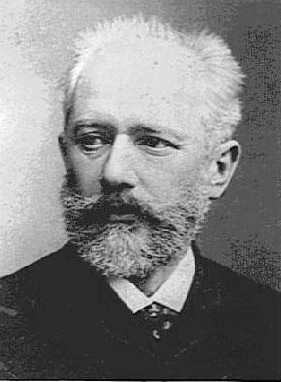Peter Ilich Tchaikovsky (1840-1893)
Born May 7, 1840 in Votkinsk, Russia.
Died November 6 1893, in St. Petersburg.
Romeo and Juliet Overture Fantasy
Composed 1869, revised in 1870 and again in 1880.
First Performance: March 16, 1870, Moscow with Nikolaus Rubenstein conducting.
Instrumentation: piccolo, 2 flutes, 2 oboes, 2 clarinets in A, English horn, 2 bassoons, 4 horns in F, 2 trumpets in E, 3 trombones, tuba, timpani, percussion, harp and strings.
Tchaikovsky’s first orchestral works, The Storm (1864), The G minor Symphony (1866) and Fate (1868) held only a spark of the genius that would erupt in Romeo and Juliet. The subject was suggested to Tchaikovsky by a recent acquaintance, Mily Balakirev (one of “the mighty handful”), to whom he had dedicated Fate. That premiere, conducted by Balakirev, was not a success. Balakirev wrote a long letter pointing out the flaws which Tchaikovsky took to heart. During the composition of Romeo and Juliet, the two corresponded frequently. After Tchaikovsky described the trouble he had getting started, Balakirev responded by providing an outline. : start with a theme depicting Friar Lawrence, depict the warring families, then the young couple. He went as far as suggesting keys for the themes. As the score progressed, Tchaikovsky frequently consulted with Balakirev.
Tchaikovsky wrote the overture fantasy in a sonata form and only loosely based it on the play. Teenagers from warring families, Romeo Montague and Juliet Capulet marry in a secret wedding presided over by Friar Lawrence who hopes that the marriage will end the family feud. Romeo is exiled on their wedding night because he killed Tybalt, to avenge the murder of Mercutio. Juliet is told to marry Paris. The Friar provides Juliet a sleeping potion that mimics death.
Romeo kills Paris, sees Juliet “dead” and takes poison. Juliet, waking to find Romeo dead, kills herself with his knife. In some productions the lovers spend a few final moments together before dying..
A woodwind choir begins the work with hymn-like music representing Friar Lawrence. Later in the work we will hear this same theme transformed into a foil for the vendetta theme.
Friar Lawrence
The introduction ends with a B minor chord passed antiphonally between the strings and the woodwinds. The exchange grows more and more agitated until the exposition begins with a depiction of a battle between the warring families by the vendetta theme.
Vendetta
The fighting subsides and the music quietly moves from B minor to D flat – as suggested by Balakirev. Our first glimpse of the famous love theme is given softly by the English horn and violas. An undulating muted string passage soon leads into a rushing scale by the flutes and oboes culminating in their statement of the love theme over sighing horns signaling the beginning of the development section.
Love Theme
The vendetta theme returns followed by the Friar Lawrence theme which suggests Juliet’s plea to him for help. Upon receipt of the sleeping potion, the music grows softer.
The coda begins with Romeo’s arrival in Juliet’s tomb. The love theme is accompanied by funeral drums. Romeo takes the poison as the theme breaks apart and Juliet wakes up. Their final moments together are accompanied by a final statement of the love theme.
The work ends with cadences and a drum roll which perhaps depicts Juliet’s suicide following Romeo’s death.
Resources
[amazon template=iframe image&asin=0486252175][amazon template=iframe image&asin=B002H3F8U0][amazon template=iframe image&asin=B000001GNO]



